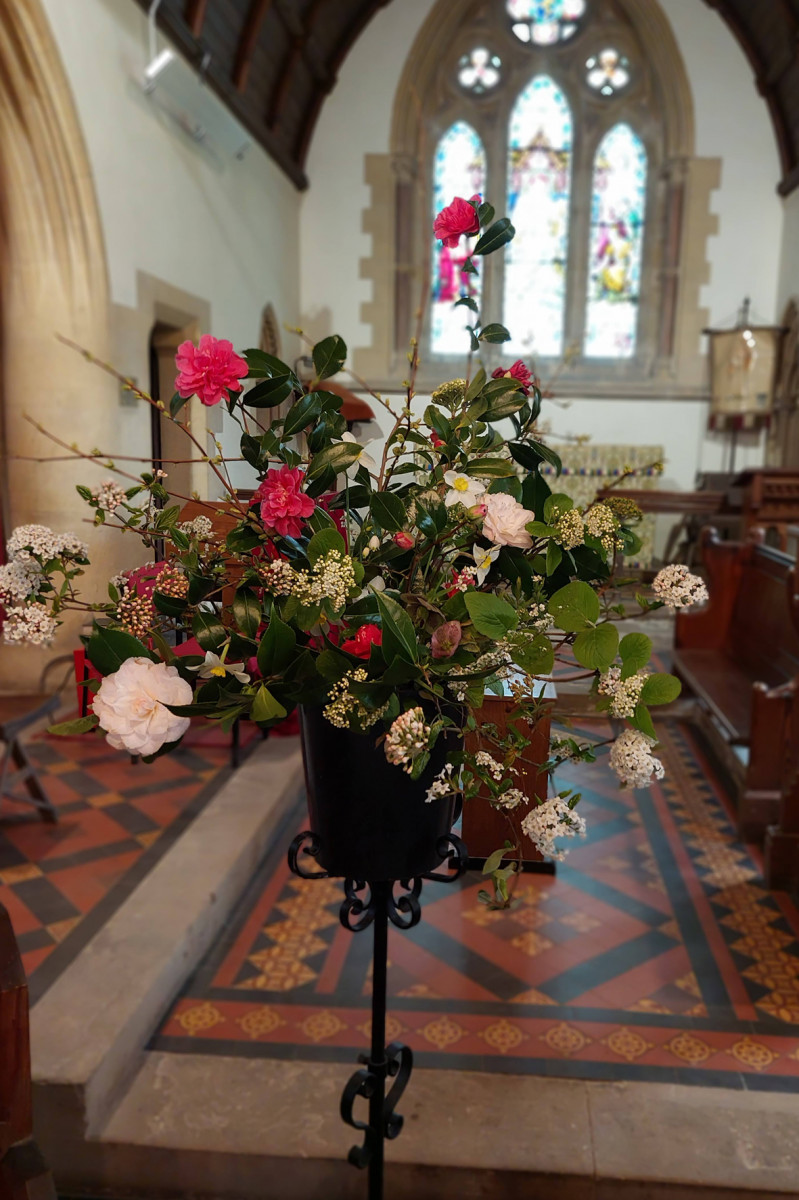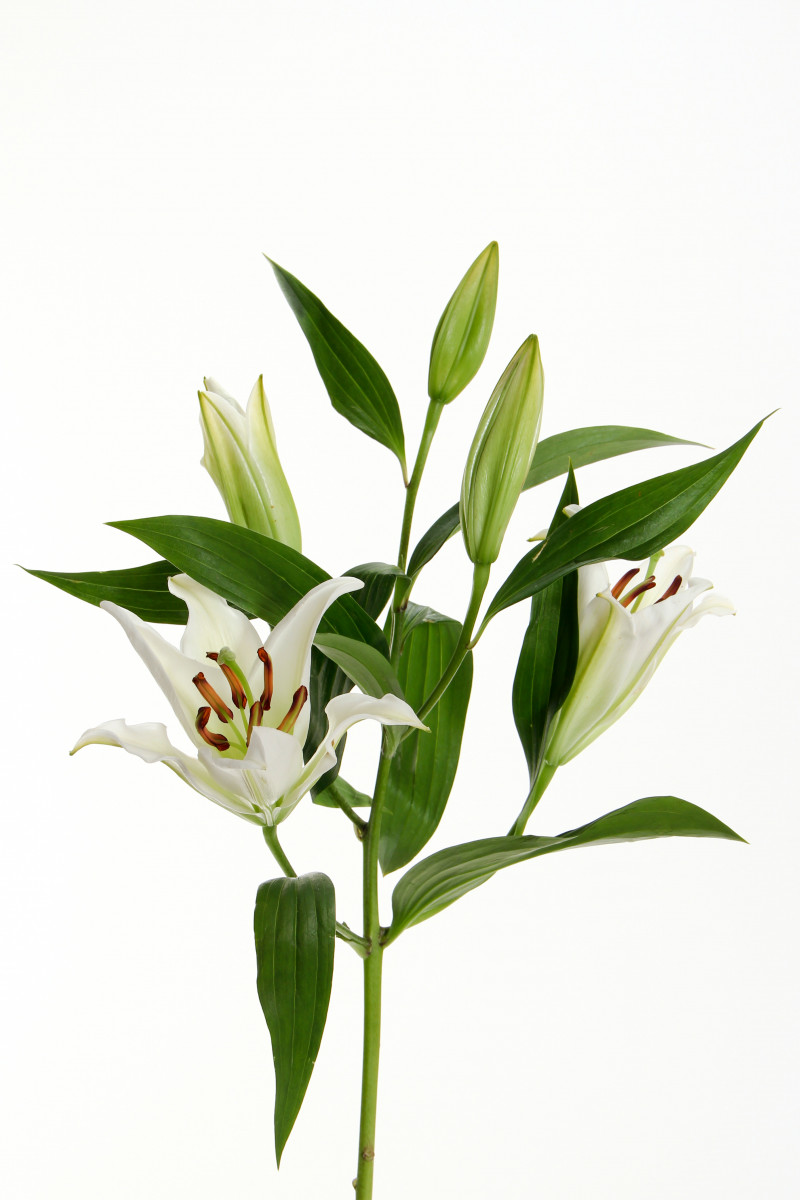 Have you considered the environmental impact of using lilies in church floral displays this Easter? The Sustainable Church Flower movement are arguing it's time to make a change. Could you instead use locally-grown, seasonal flowers?
Have you considered the environmental impact of using lilies in church floral displays this Easter? The Sustainable Church Flower movement are arguing it's time to make a change. Could you instead use locally-grown, seasonal flowers?
Easter lilies seem as traditional, and indispensible, as chocolate eggs and Easter bunnies. Just like the eggs, their symbolism has ancient roots in many pre-Christian myths and legends.
Apparently, white lilies sprung from the breast milk of the goddess Hera as she fed Hercules, the mortal son of Zeus. And they were associated with fertility and motherhood in many other cultures too. Christianity adopted them as a symbol of purity, and they became one of the flowers associated with The Virgin Mary, just as they had been linked to Aphrodite and Hera in a previous life.
They certainly appear in the Bible, but not once are they mentioned there in connection with the death or resurrection of Jesus. Lilium candidum is indigenous in the Middle East, so they’d have been a familiar flower, but they certainly don’t bloom there in time for Easter. This sadly makes the legend that they appeared at the foot of the cross seem unlikely, albeit attractive.
So why did they become linked with Easter? Fast forward to 1819. That’s when Lilium Longiflorum, the Easter Lily as we know it, was first introduced to England from the Ryukyu Islands of Southern Japan. The Language of Flowers was increasingly popular in high society and undoubtedly this new, highly scented, waxy white lily, perfectly fitted its allocated symbol of “purity” in the lexicon.
It was also discovered that the bulbs could be forced in the heated greenhouses rich Victorians were building to mollycoddle the exotic plant treasures arriving in the country with every ship. So, lilies could be coerced into flowering out of season.
Their natural habit of resting underground for several months of the year as a bulb, before bursting through the earth to bloom, made them a natural symbol of hope and re-birth, and the resurrection seemed only a short hop and skip away from that concept. Soon, the out of season, captivatingly exotic, Easter Lily tradition was born.
At first they’d only have been seen in churches with rich greenhouse owning patrons. As much to show off their wealth as to honour the risen Lord. But the idea obviously caught on and by the late 20th Century, with flowers readily available from the greenhouses of Holland or the fields of Africa, the Easter lily became the optimal flower in almost every church in the land.
But therin lies the Easter lily rub. In February of this year, the Financial Times ran an article entitled Carbon Counter: summing up roses, with research showing that one single rose stem flown to the UK creates almost 3kg of Co2; and a Dutch grown lily creating well over 3kg of Co2. This is the equivalent of burning 1kg coal per stem. If a single church uses a conservative 10 stems of lilies at Easter, it doesn’t take a great mathematician to work out that this creates over 30kg of Co2; comparable to burning 10kg of coal. It really is a lot of Co2 for a vase or two of flowers.
We seriously need to ask ourselves if we can really condone the use of forced, out of season flowers, given the environmental costs involved in their production and transportation.
The Oxford diocesan synod has recently approved a motion encouraging its churches to look for alternatives to Easter Lilies this year. They calculate it would save approximately 24 tonnes of Co2, if all 800 churches in their diocese did so. Besides the carbon contribution, we might also consider the environment-altering pesticides and chemicals used in the industrial flowers industry. A recent Belgian study identified no less than 107 active substances on 90 flowers found in flower shops and supermarkets, some of which present acute toxicity, potentially generating a direct effect on the nervous system of handlers and florists.
 The Sustainable Church Flower movement, founded at Harpley in Worcestershire, works to promote the reduction/banning of floral foam oasis, and the use of local, seasonal flowers. It would be wonderful in churches in the Diocese of Worcester might also reconsider the lilies at Easter.
The Sustainable Church Flower movement, founded at Harpley in Worcestershire, works to promote the reduction/banning of floral foam oasis, and the use of local, seasonal flowers. It would be wonderful in churches in the Diocese of Worcester might also reconsider the lilies at Easter.
Other seasonal flowers to consider might include hellebores, daffodils, narcissi and branches of the just opening blossoms. Growing plants of primroses or cowslips could also be a thought, and then these can be planted in the churchyard to increase the biodiversity there too. There could be a sharing of Easter churches decorated from local flowers from the local soil.
Are you planning alternative flower arrangments this Easter? Share your pictures with us!
Lily photo by Doug Kelley on Unsplash

